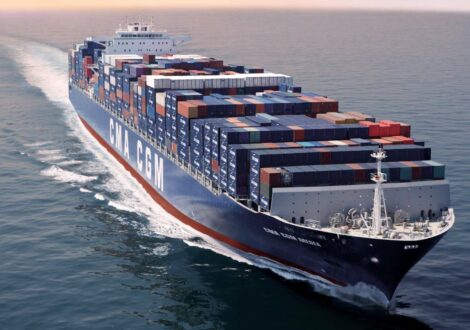- By TOP CHINA FREIGHT
- August 12, 2025
- Shipping
Shipping from China to Canada is a crucial route for international trade, connecting two major economic powers. Whether you’re a business importing goods or an individual shipping personal items, understanding the shipping options, costs, transit times, and customs procedures will help you plan better and avoid unexpected delays or expenses.

1.Overview of Shipping from China to Canada
China is one of Canada’s largest trading partners, and the volume of goods shipped between the two The key challenge for importers is choosing the right shipping method balancing cost, speed, and reliability.
2.Key Industries Importing from China to Canada
Components for vehicle manufacturing and aftermarket replacements are imported regularly, often requiring specialized logistics solutions to handle varied sizes and weights.
China is a major supplier of consumer electronics, computer components, smartphones, and accessories. These products often require fast and secure shipping methods like air freight or express services due to high value and demand for quick delivery.
Clothing, footwear, and fashion accessories make up a significant portion of imports. Many retailers depend on sea freight for cost-effective bulk shipments, especially during seasonal inventory replenishment.
Industrial machinery, tools, and parts are frequently shipped by sea. These heavy and bulky goods benefit from full container loads (FCL) for better pricing and protection.
Components for France’s automotive Large furniture pieces, home décor, and appliances are commonly shipped by sea freight. Proper packaging and labeling are essential to prevent damage during long transit times.
Raw materials and finished plastic products are shipped in bulk, mainly by sea freight, with strict adherence to safety and customs regulations.
3.Shipping Methods from China to Canada

Sea Freight
Sea freight is the most common and economical way to ship large volumes of goods from China to Canada. It is ideal for bulky or heavy shipments that are not time-sensitive.
Transit time:
Approximately 25-40 days depending on the ports of origin and destination.
Ports in China:
Shanghai, Shenzhen, Ningbo, Qingdao, Guangzhou, and Hong Kong.
Ports in Canada:
Vancouver, Montreal, Prince Rupert, and Halifax.
Cost:
Sea freight charges are generally based on container size (20ft, 40ft, or 40ft High Cube) or volume/weight for less than container load (LCL) shipments.
Advantages:
Cost-effective for large shipments.
Disadvantages:
Longer transit times and potential port delays.

Air Freight
Air freight is faster than sea freight but more expensive. It is suitable for high-value, urgent, or perishable goods.
Transit time:
Typically 5-10 days door-to-door.
Airports:
Major Chinese airports include Shanghai Pudong (PVG), Beijing Capital (PEK), and Guangzhou Baiyun (CAN). Canadian airports include Toronto Pearson (YYZ), Vancouver (YVR), and Montreal (YUL).
Cost:
Calculated per kilogram or volumetric weight. Prices fluctuate based on fuel costs and demand.
Advantages:
Fast transit times and good for urgent shipments.
Disadvantages:
Higher cost, limited capacity compared to sea freight.

Express Courier Services
For small packages or documents, courier services like DHL, FedEx, and UPS provide door-to-door express delivery.
Transit time:
2-5 days.
Cost:
Highest cost per kilogram compared to air and sea freight.
Advantages:
Fastest delivery, convenient tracking, and customs clearance services.
Disadvantages:
Expensive for bulky or heavy shipments.
4.Transit Times from China to Canada
| Shipping Method | Transit Time (Days) |
|---|---|
| Sea Freight | 25-40 days |
| Air Freight | 5-10 days |
| Express Courier | 2-5 days |
Transit times can vary depending on the shipping season, customs clearance speed, and weather conditions.
5.Shipping Costs from China to Canada
Shipping costs depend on several factors:
1.Mode of transport:
Air freight is costlier than sea freight.
2.Shipment size and weight:
Full container loads (FCL) are cheaper per unit than less than container loads (LCL).
3.Distance and route:
Direct routes cost less than indirect.
4.Seasonality:
Peak seasons (like before holidays) can increase costs.
5.Fuel surcharges and taxes:
Fluctuate with global fuel prices.
To get the best rates, compare multiple freight forwarders and consider consolidating shipments.
6.Customs Clearance and Import Regulations in Canada
| Customs Requirement | Description |
|---|---|
| Customs Documentation | Bill of lading, commercial invoice, packing list, and certificate of origin are required. |
| Duties and Taxes | Import duty rates depend on product category and tariff classification; GST is also charged. |
| Permits and Licenses | Special permits needed for certain goods such as food, pharmaceuticals, and some electronics. |
| Prohibited or Restricted Items | Certain goods are banned or restricted; always verify Canada’s prohibited goods list before shipping. |
7.Common Challenges in Shipping from China to Canada
1.Delays in Customs Clearance:
Insufficient or incorrect documentation can cause hold-ups.
2.Port Congestion:
Busy ports may result in longer unloading times, especially during peak seasons.
3.Tariff Changes:
Sudden adjustments in duties or trade policies affect shipping costs.
4.Currency Fluctuations:
Variations in exchange rates can influence freight charges and overall expenses.
5.Communication Barriers:
Language and time zone differences may complicate coordination with suppliers and freight forwarders.
Proactive planning and choosing experienced logistics partners help mitigate these challenges.
8.Tips for Smooth Shipping from China to Canada
Allow extra time for customs clearance, especially during peak seasons.
Use tracking tools offered by carriers for real-time updates.
Balance cost vs. delivery speed based on your shipment needs.
Experienced agents can handle documentation, packaging advice, and coordinate multimodal transport.
Tariff changes and import restrictions can affect costs and feasibility.
Final Thoughts
Shipping from China to Canada offers multiple options tailored to different business needs and budgets. Sea freight remains the best choice for large, non-urgent shipments, while air freight and express courier services provide fast delivery for smaller, valuable items. Understanding the costs, transit times, and customs requirements will help importers avoid pitfalls and maintain a smooth supply chain.
Ask for a quote
Are you ready shipping from China to Canada?
Contact TJ China Freight for a fast, accurate, and competitive shipping quote.
FAQs
Q1: What are the main shipping options from China to Canada?
The primary options are sea freight, air freight, and express courier services. Sea freight is cost-effective for large shipments, air freight is faster but more expensive, and express couriers are best for small, urgent parcels.
Q2:How long does it take to ship goods from China to Canada?
Sea freight usually takes 25-40 days, air freight about 5-10 days, and express shipping 2-5 days, depending on specific routes and customs clearance times.
Q3:What documents do I need to import goods from China to Canada?
Commonly required documents include the bill of lading, commercial invoice, packing list, and certificate of origin. Some products may also require permits or licenses.
Q4: Are there any restricted or prohibited items I cannot ship from China to Canada?
Yes. Canada prohibits or restricts certain items such as firearms, hazardous materials, some food products, and endangered species. Always check the current list before shipping.
Q5: How are import duties and taxes calculated?
Duties depend on the product’s tariff classification and declared value. Canada also applies a Goods and Services Tax (GST) on imported goods. Rates vary by product category.
